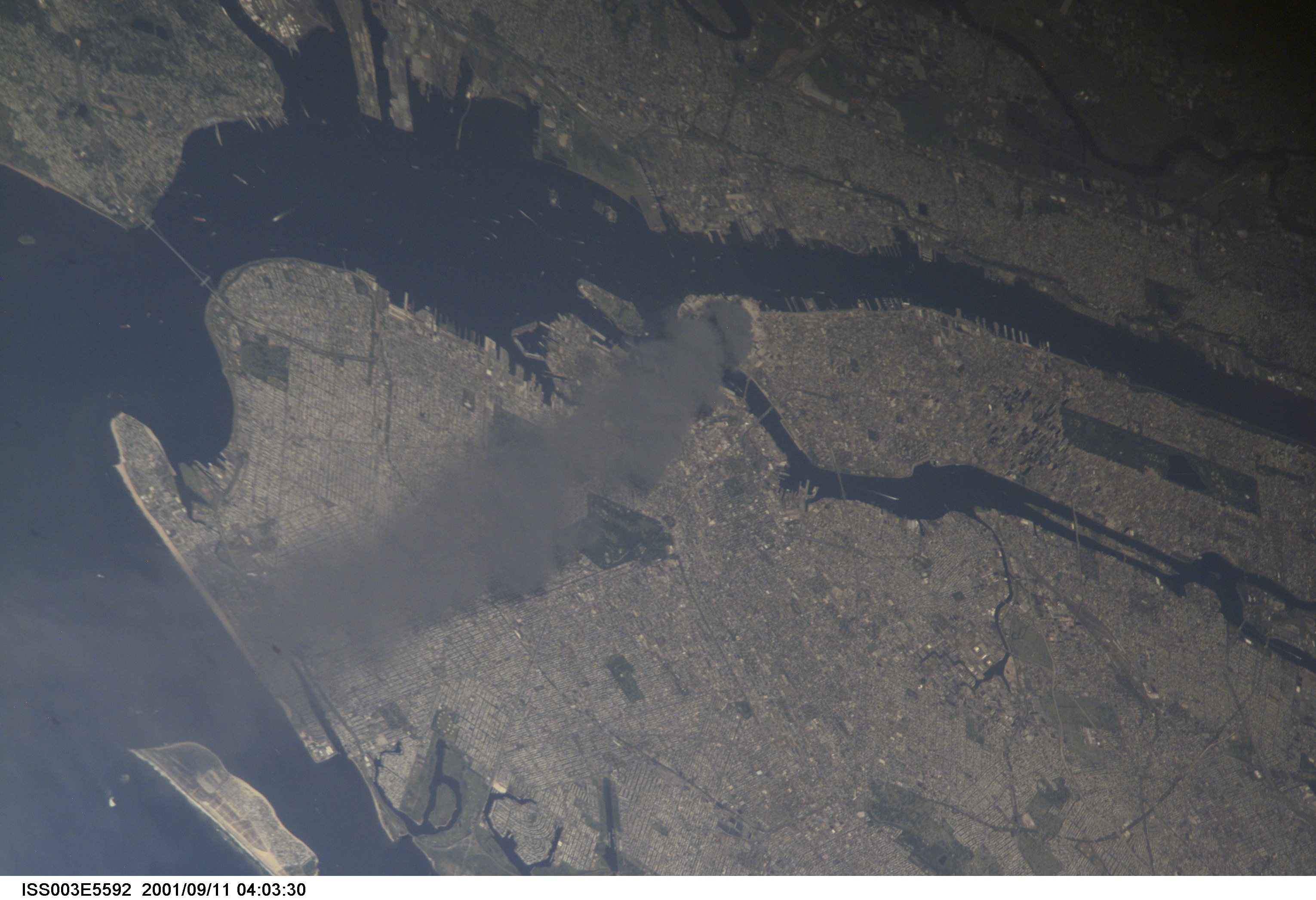Last Updated on 10/01/2020 by Chris Gampat
In the grand scheme of things, the cameras of 9/11 aren’t important. But without them, photographers would not have been able to document this horrific moment in world history.
The terrible events that unfolded in New York City on September 11th, 2001 sent shock waves around the globe. The unthinkable had happened, and terror was brought to our doorstep. New York City streets were filled with citizens fleeing the chaos unfolding around them. There were a few photographers who were in the area that made it their mission to document the scenes. The photographers and the cameras of 9/11 captured the terror, chaos, and heroism of New York City on that fateful morning. Without them, the pictorial history of 9/11 would not be as complete as it is today. The events in New York City on Septemeber 11th will never be forgotten thanks in part to the cameras of 9/11 and the scenes they recorded. The world became a much darker place that day and life as we knew it changed forever. The photographers, along with millions of other NYC residents, started out their day just like any other. Little did they know that their day would become one they would never forget.
The late 90s and early 2000s were an exciting time in the world of photography. Film cameras were still very much king, but their throne was starting to topple due to the uprising of digital cameras. According to David Handschuh (who was a photographer for the New York Daily News), by 2001, most major news outlets had begun outfitting their crew with digital cameras. Cameras like the Nikon D1 and the Canon D30 were issued despite their high prices. However, a lot of people outside of the realms of photojournalism still used trusty film cameras. The images that were captured on the morning of 9/11 show that the photographers who braved ground zero to record images used a mixture of film and digital bodies. The important thing though is that the cameras were in the hands of their owners when they needed to be. Let’s take a look at the cameras of 9/11 below.
The Nikon D1
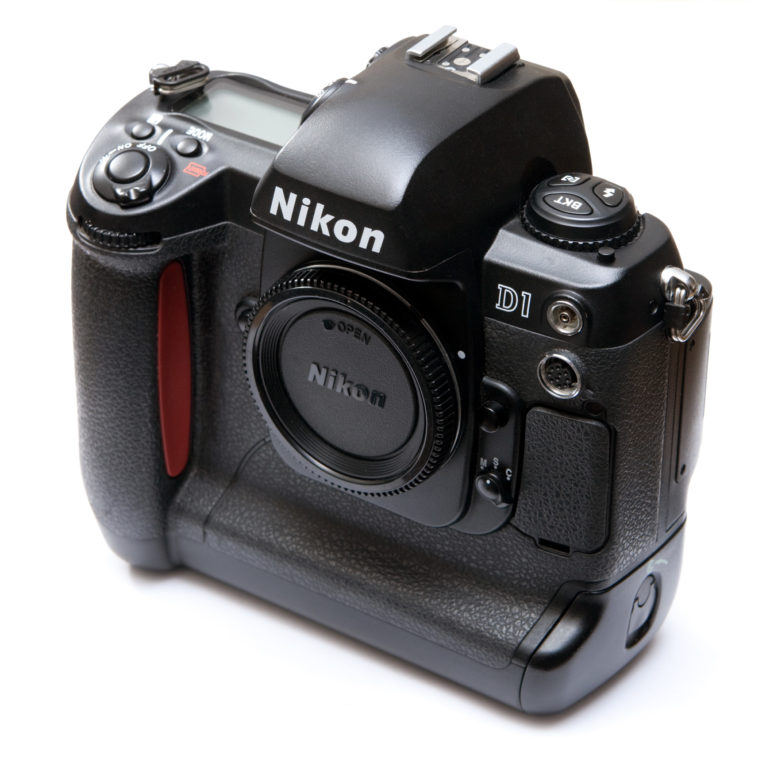
I was fortunate enough to chat with David Handschuh, who worked for the New York Daily News at the time of the attacks. David was actually one of the first photographers in New York City to transition to digital cameras full time back in 1993. On the morning of September 11th, 2001 David had two Nikon D1s on his person as did his colleague Todd Maisel. The Nikon D1 was one of the finest digital cameras at the time. It had a resolution of 3 Megapixels, a max ISO of 1600, and it could shoot at 4.5 frames per second. It was also solidly built, but this tank of a camera was not strong enough to withstand the events of the day.
One of the Nikons David was carrying had a 24-70mm lens, and the other had an 80-200mm. As you can imagine, David found himself surrounded by utter chaos that morning, and he was caught up in the rubble that fell from the towers that collapsed. David suffered a crushed right leg, and his left leg was too damaged to stand on. Fortunately, firefighters were able to dig him out from the debris. He was lucky to make it out alive that day, as were many others.
The Nikon D1’s didn’t survive the thick clouds of concrete that enveloped the area, but Daves colleague Todd Maisel was able to rescue the CompactFlash cards. Todd rushed the cards to the office and was able to save roughly 180 images. David’s camera, his work, and his bravery helped capture some iconic images from 9/11. Without him putting himself in harm’s way, we wouldn’t have been able to see the scenes of courage and heartache that shook the nation and the world.
NASA Used the Kodak DCS 460
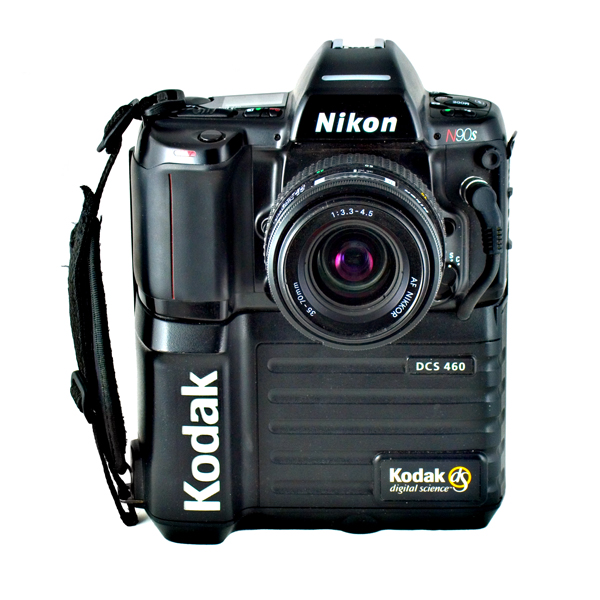
NASA also had one of the cameras of 9/11. Astronaut Frank Culbertson used a modified Nikon N90s film camera with a digital Kodak DCS 460C back to capture images of the plumes of smoke rising from Manhattan. When the pictures were taken, the ISS was at an altitude of 250 miles as they orbited the Earth. Frank Culbertson shared his story and his feelings about taking the image of Manhattan burning with Space.com.
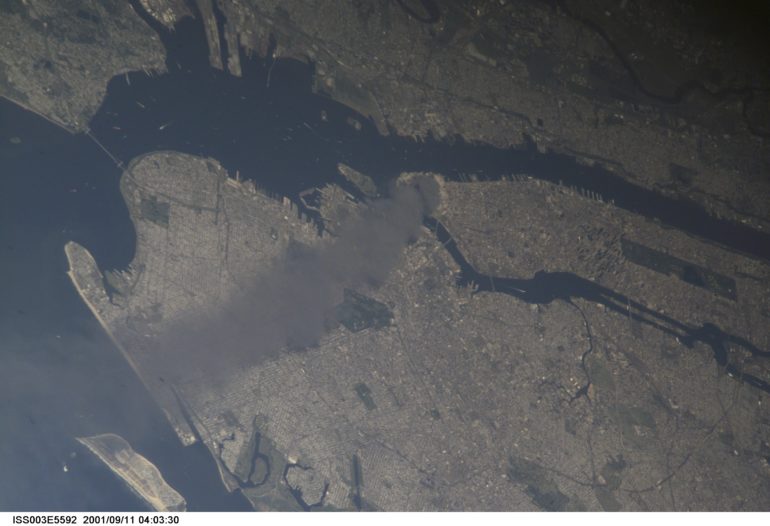
At the time of the attacks, Frank was the only American not on the planet. Every time the still under construction International Space Station would orbit (once every 90 minutes) he tried to see more of what was happening. Frank could see that the Pentagon had a massive hole through it, and he noticed the contrails from the planes that zig-zag across the US every day were nowhere in sight, except for one. The only flight he could see was that of Air Force One, which was heading back to Washington D.C. It was a very sobering time for Frank and the two cosmonauts on the space station. They had no internet access, and there was no live TV stream at the time. All they knew was what they could see, and what ground control was telling them.
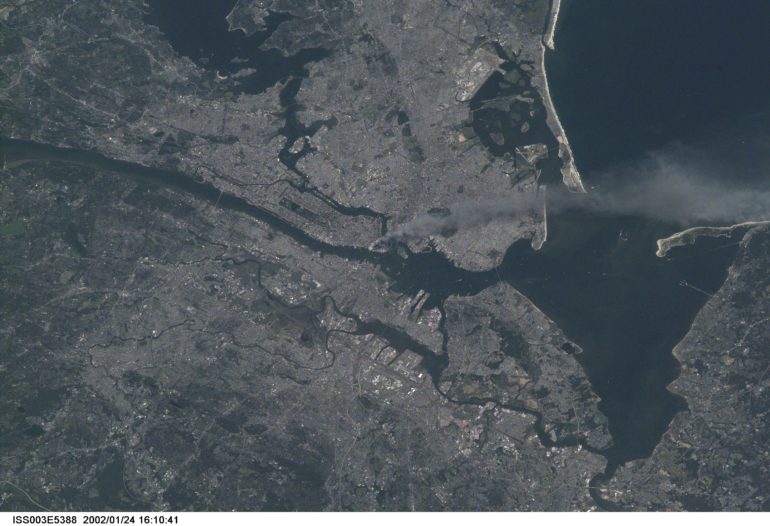
Frank Culbertson was able to capture the images above and below while the International Space Station was traveling at five miles per second (18,000mph) around the globe. After the first pass over Manhattan, Frank and the crew got every camera they could find ready to go. With this task complete, they would be prepared to capture as many images and as much video as possible on the next flyover. The sheer speed at which they were traveling meant that Frank and the others had to work fast to be able to capture video and images as they soared around the planet. The lenses used are unknown, but looking at the EXIF data for the files you can see they were shot at 180mm and 800mm. You can see more of the images here.
“Frank could see that the Pentagon had a massive hole through it, and he noticed the contrails from the planes that zig-zag across the US every day were nowhere in sight, except for one.”
The Kodak DSC460C aboard the I.S.S was able to capture 6 Megapixel images, and it had just one ISO setting of 80. The camera was only able to shoot at two frames per second too. This camera had a price tag that’s almost as high as the space station itself. When this camera was launched back in 1995, it had a retail price of $35,600. With inflation taken into account, this camera would have cost $59,745 today!
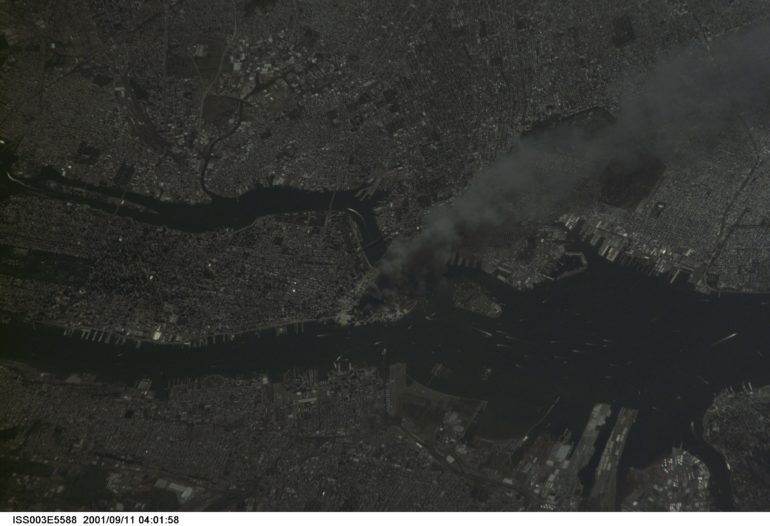
Of course, none of this was going through the mind of Frank at the time. Frank Culbertson just needed a camera that would work and would get the job done. The mission from that morning turned from one of needing to send medical data to ground control to one of documenting one of the worst terrorist attacks the world has seen. I can’t imagine how utterly helpless those astronauts must have felt as they witnessed this horrific event unfold from space.
Joel Meyerowitz and His Cameras of 9/11
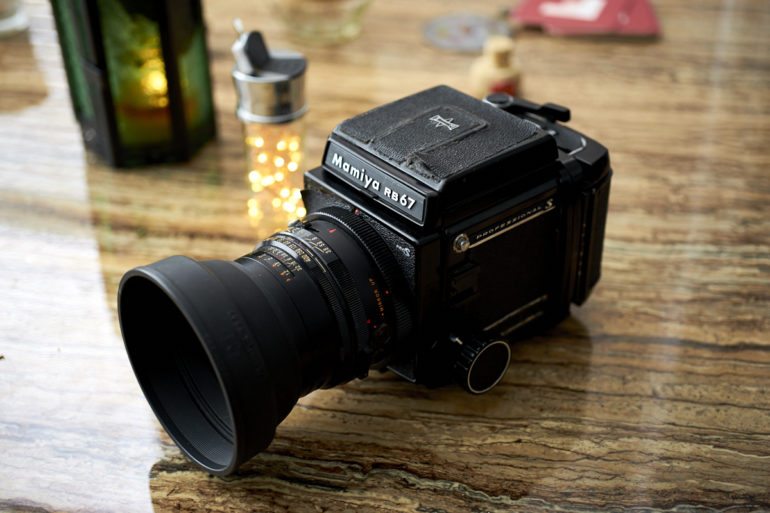
I reached out to Joel Mayerowitz via his website to see if I could find out what cameras he used on this fateful day. On the day of 9/11, Joel made his way downtown to see if he could capture images from ground zero. As he started snapping pictures, he was punched in the back. To his surprise, when he turned around, he saw that it was a police officer who was hitting him. She proceeded to tell him that photography was not allowed per direct order of the mayor.
Leica Portrait: Joel Meyerowitz from Leica Camera on Vimeo.
Joel took it upon himself to make sure these events were captured. This was history being made before everyone’s eyes, and he knew it had to be recorded and documented. Joel was ultimately given unprecedented access to ground zero after 9/11. For nine months Joel used a Leica (model unknown), a Deardorff 4×5, and a Mamiya 6×7 to capture more than 8,000 images. Joel’s photographs were used in exhibitions around the world, and he made a book called Aftermath that documents the events of 9/11 and beyond.
More Cameras of 9/11
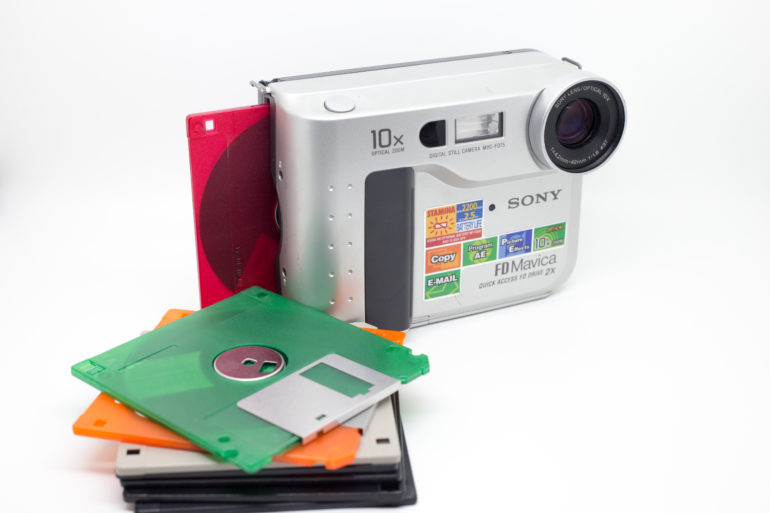
An article on Gizmodo from 2011 sheds some light on some other cameras of 9/11 that were used by photographers. AP Photographer Carmen Taylor, who is credited with capturing an image of one of the planes hitting a tower, used a Sony Mavica to capture images from that day. The Sony Mavica platform was an interesting one. The cameras used 3.5-inch floppy discs to record the photos instead of CompactFlash cards. The embedded disc drive made then quite heavy, noisy, and slow.
The maximum resolution of images was limited to 640×480 (0.35 megapixels), and even then a single floppy could only hold about 20 images. The Sony Mavica FD75 had a 4.2-42mm lens with an aperture of f1.8-2.9. A max ISO of 100, a max shutter speed of 1/4000, and a 1/4-inch sensor really limited the performance of the camera. The Sony Mavica had a price of around $1,000.
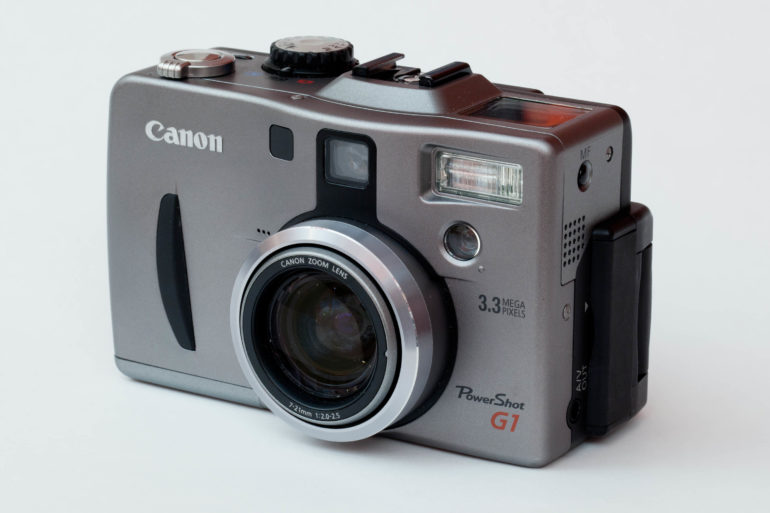
An article on DPReview shed some light on a box of CD’s that were purchased from an estate sale recently. The CD’s contained more than 2,300 images that were captured by an unknown photographer who was working at Ground Zero. The photos were taken with a Canon Powershot G1; a 3.3 Megapixel camera which was released in the year 2000. This camera had a flip-out and twist screen, a 7-21m lens with an aperture of f2 to f2.5, and a 1/1.8″ sensor. This camera had a street price of $1,100 when it was released in late 2000. With inflation, this camera would cost $1,642.05 today. With prices like this, you can see why many consumers and even prosumers stayed with film cameras for a little while longer.
The images from the CDs (which were shared on Flickr) show the sheer amount of destruction caused by the planes that hit the towers. The pictures can be hard to look at, but they tell the story of those who cleaned up the area and tried to put some order back into place after the terrible events. Thankfully, the images that were shot with the Canon Powershot G1 were able to be saved.
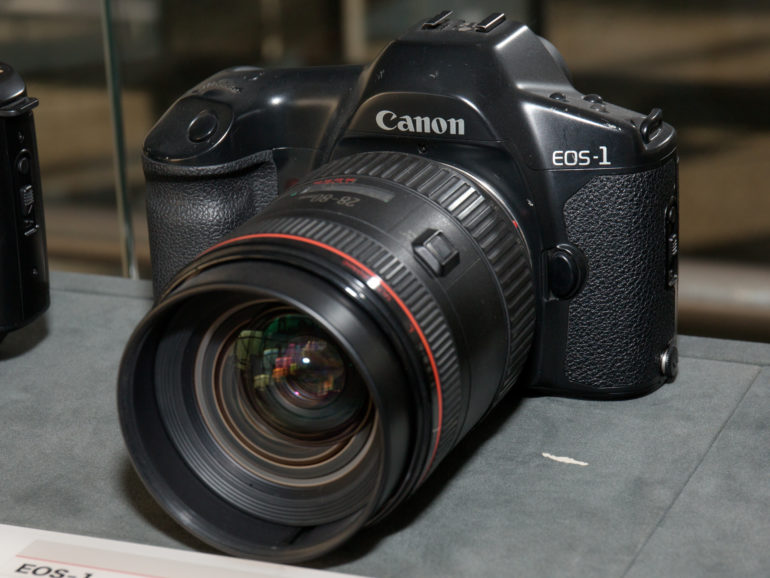
Photographer Bill Biggart, who you can read about on The Digital Journalist, unfortunately lost his life along with over 3,000 people that day. Bill was doing his part to document one of the darkest days in world history. Bill was unfortunately found under the rubble from the second tower with his two Canon EOS 1 film cameras, and a digital Canon D30. He was taking pictures until the very end, and never gave up on his desire to document this event for future generations.
The Canon EOS 1 (pictured above) was a camera from Canon’s professional line. By itself, the camera was capable of shooting 2.5 frames per second, but that could be increased to 5.5 frames per second with the optional Power Drive Booster. The pentaprism viewfinder had 100% coverage, and the camera featured 14 custom functions and shooting modes. Released in 1989 the Canon EOS 1 had a street price of $1,775.09, or $3,700 in today’s money.
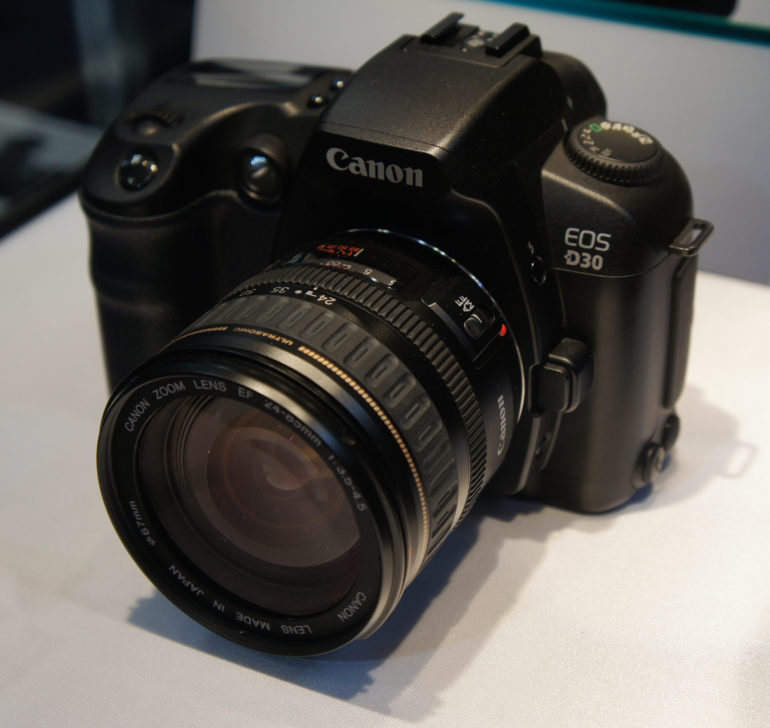
The Canon 30D was the company’s first digital SLR which they launched on May 17th, 2000. According to an article on Gizmodo, the Canon D30 was used by photographer Allen Tannenbaum, who also had a Canon EOS 1. The Canon D30 was also used by photographer Mario Tama. The Canon D30 was a 3.1 Megapixel APS-C camera with a max shutter speed of 1/4000 and a maximum ISO of 1600. Photographers could rattle off three frames per second, but the buffer would be full after eight frames. The D30 cost $2,430 in 2000. That would be $3,627 in 2019.
It’s hard to sum up in words what happened on this day in our country’s history. It’s a day where more than 3,000 people lost their lives in New York, Pennsylvania, and Washington D.C in one of the most cowardly acts the world has ever seen. As we remember this tragic day, our hearts, thoughts, and prayers go out to those who were affected by the events of 9/11. Untold amounts of gratitude go out to those who put themselves in harm’s way to save thousands of lives. The images captured with the cameras of 9/11 help tell a story of terror, chaos, bravery, and heroism that should never be forgotten.


